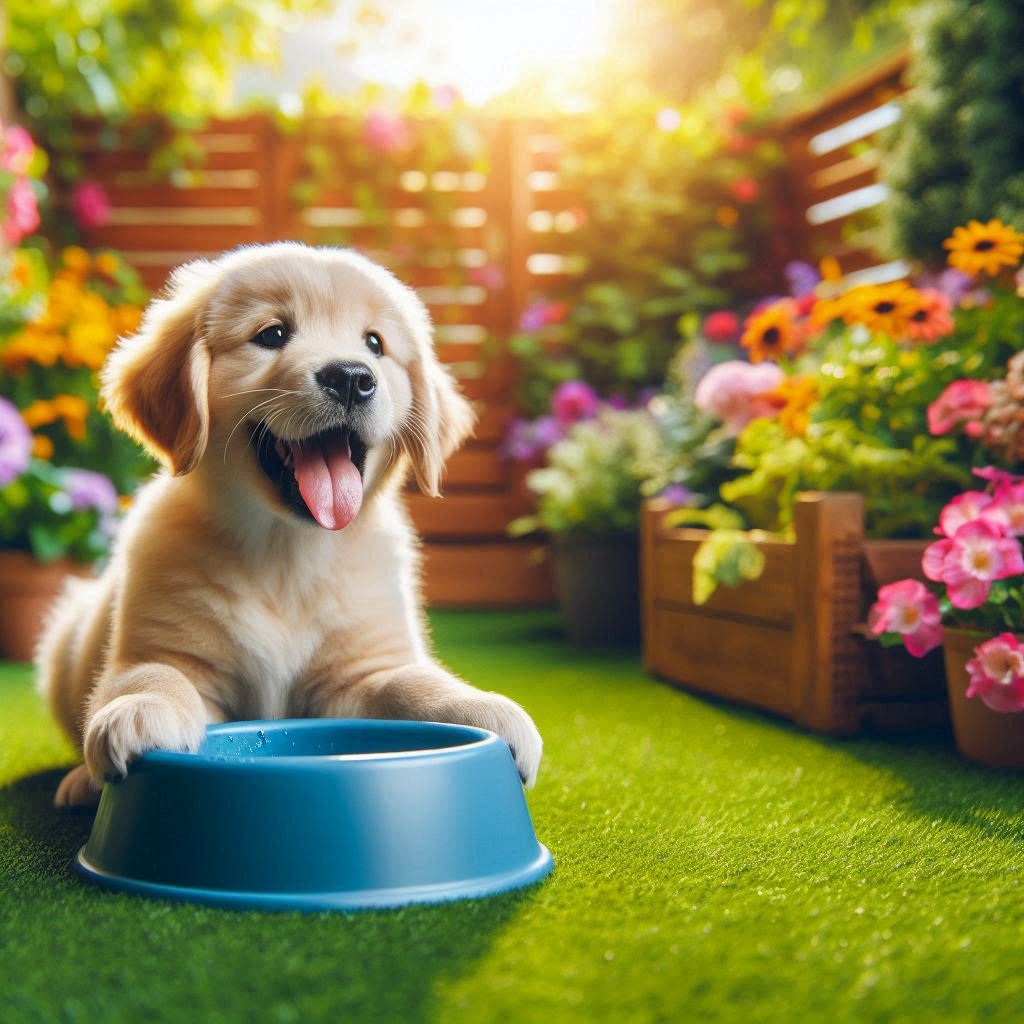Water is essential for life, and just like humans, pets need proper hydration to stay healthy. Dehydration in dogs and cats can lead to serious health issues, including kidney problems, overheating, and digestive issues. But how do you ensure your pet is getting enough water daily?
In this guide, we’ll explore the best ways to keep your pet hydrated and healthy, recognize signs of dehydration, and understand how much water your furry friend really needs.
1. How Much Water Does Your Pet Need? 💧🐾
The amount of water a pet needs depends on size, breed, diet, and activity level.
✅ Dogs: Should drink about 50-100 ml of water per kg of body weight daily.
✅ Cats: Should drink 60-80 ml of water per kg of body weight daily.
📌 Example: A 10 kg (22 lb) dog should drink 500-1000 ml (2-4 cups) of water per day.
🐾 Pets on a dry food diet need more water than those eating wet food, as kibble has low moisture content.
2. Signs of Dehydration in Pets 🚨
Recognizing dehydration early is crucial to prevent serious health issues.
🔴 Common Symptoms:
- Dry gums and sticky saliva
- Loss of skin elasticity (skin stays up when pinched)
- Sunken eyes
- Excessive panting
- Lethargy or weakness
- Dark yellow urine or less frequent urination
📌 Skin Elasticity Test:
Gently lift the skin between your pet’s shoulder blades. If it doesn’t snap back quickly, your pet is dehydrated!
🚨 Severe dehydration requires emergency vet care.
3. Provide Fresh and Clean Water at All Times 🥤
Pets prefer fresh, clean water over stale or contaminated water.
✅ Change water bowls at least twice a day.
✅ Wash bowls daily to prevent bacteria buildup.
✅ Use stainless steel or ceramic bowls (plastic can retain bacteria and odors).
✅ Keep multiple water stations around the house, especially for older pets or those with mobility issues.
4. Add Water to Their Food 🍖💦
One of the easiest ways to increase hydration is by adding moisture to meals.
✅ Mix wet food with kibble to increase water intake.
✅ Soak dry food in water or low-sodium chicken broth.
✅ Offer raw or cooked meats with natural juices (avoid seasonings).
🐱 Cats are naturally low water drinkers—switching to a wet food diet can help keep them hydrated!
5. Encourage Your Pet to Drink More Water 🚰
Some pets need a little extra encouragement to drink enough water.
🐶 For Dogs:
✔ Place water bowls in different areas of the house.
✔ Use an elevated bowl for larger breeds.
✔ Give ice cubes as a fun, hydrating treat.
🐱 For Cats:
✔ Use a cat water fountain—cats love running water!
✔ Offer flavored water (add a tiny amount of tuna juice or bone broth).
✔ Try wide, shallow bowls—cats don’t like their whiskers touching the sides.
6. Avoid Dehydration During Hot Weather ☀️
During summer or after exercise, pets lose more water through panting and sweating (yes, dogs and cats sweat through their paws!).
✅ Always carry a portable water bottle when taking your pet outside.
✅ Keep pets indoors during peak heat hours (10 AM – 4 PM).
✅ Provide cooling mats or damp towels for hot days.
✅ Add ice cubes to water bowls for extra cooling.
🚨 Warning: Never leave your pet in a parked car—even for a few minutes! Heatstroke can be fatal.
7. Make Hydration Fun with Treats! 🍉🍦
Turn hydration into a fun experience with pet-safe treats.
🍉 Hydrating Foods for Dogs and Cats:
✔ Watermelon (seedless)
✔ Cucumbers
✔ Strawberries
✔ Cantaloupe
✔ Zucchini
🍦 DIY Hydration Treats:
✔ Frozen bone broth cubes 🦴
✔ Plain yogurt popsicles 🍦
✔ Ice cubes with treats inside 🧊
🐾 Always check with your vet before introducing new foods!
8. Use Pet Fountains for Fresh, Flowing Water 🚰
Some pets, especially cats, prefer running water over stagnant water.
✅ Invest in an automatic water fountain to encourage drinking.
✅ Choose a quiet, stainless steel fountain to reduce bacteria growth.
✅ Keep it clean and refill daily.
📌 Tip: If your cat loves drinking from the sink, a fountain is a perfect solution!
9. Monitor Urine Color for Hydration Levels 🧐
The color of your pet’s urine can indicate hydration levels.
🔵 Light yellow = Well-hydrated (good!)
🟡 Dark yellow = Mild dehydration
🟠 Orange or brown = Severe dehydration (needs vet care!)
📌 Tip: If your pet’s urine is dark or concentrated, encourage them to drink more water!
10. Know When to See a Vet 👩⚕️🐾
If your pet shows signs of chronic dehydration, consult a vet immediately.
🚨 Emergency Signs:
- No urine output for 12+ hours
- Continuous vomiting or diarrhea
- Rapid heart rate or collapse
- Sticky, dry gums and lethargy
💉 Severe cases may require IV fluids at the vet clinic.
Final Thoughts: Hydration = A Happy, Healthy Pet 🐶🐱💧
Keeping your pet hydrated is one of the simplest ways to ensure their overall health and longevity. By providing fresh water, hydrating foods, and fun hydration tricks, you’ll help your furry companion stay happy, active, and healthy every day!
🐾 Your pet depends on you—make hydration a priority!
